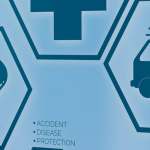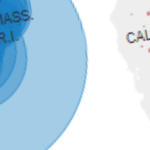CCIIO Open Door Forum No Surprises Act
From CMS on December 3, 2021
Centers for Medicare & Medicaid Services Center for Consumer Information and Insurance Oversight
Special Open Door Forum: Provider Requirements under the No Surprises Act
Wednesday December 8, 2021 | 2:00-3:00 pm Eastern Time
Conference Call Only
Participant Dial-In Number: 1-888-455-1397
Conference ID #: 8604468
The Center for Consumer Information and Insurance Oversight (CCIIO) and the CMS Office of Communication will host an orientation to provider requirements under the No Surprises Act.
Starting January 1, 2022, consumers will have new billing protections when getting emergency care, non-emergency care from out-of-network providers at in-network
On July 1, 2021, the “Requirements Related to Surprise Billing; Part I,” interim final rule was issued to restrict surprise billing for patients in job-based and individual health plans who get emergency care, non-emergency care from out-of-network providers at in-network facilities, and air ambulance services from out-of-network providers.
On September 30, 2021, a second interim final rule was issued and is open for public comment. The “Requirements Related to Surprise Billing; Part II” rule provides additional protections against surprise medical bills, including:
- Establishing an independent dispute resolution process to determine out-of-network payment amounts between providers (including air ambulance providers) or facilities and health plans.
- Requiring good-faith estimates of medical items or services for uninsured (or self-paying) individuals.
- Establishing a patient-provider dispute resolution process for uninsured (or self-paying) individuals to determine payment amounts due to a provider or facility under certain circumstances.
- Providing a way to appeal certain health plan decisions.
Together, these lay the groundwork to provide consumers with protection against surprise billing, starting in 2022. Learn more about how these rules help consumers.
Here is the link to our No Surprises page that has the slides: https://www.cms.gov/
We look forward to your participation.
Special Open Door Participation Instructions:
Participant Dial-In Number: 1-888-455-1397
Conference ID #: 8604468
Note: TTY Communications Relay Services are available for the Hearing Impaired. For TTY services dial 7-1-1 or 1-800-855-2880. A Relay Communications Assistant will help.
A transcript and audio recording of this Special ODF will be posted to the Podcast and Transcripts website at https://www.cms.gov/
For automatic emails of Open Door Forum schedule updates (E-Mailing list subscriptions) and to view Frequently Asked Questions please visit our website at http://www.cms.gov/
Thank you for your interest in CMS Open Door Forums.

















